Use this DIY gluten-free fish food when you have a wheat allergy and you have pet gold fish. Commercial fish food is full of wheat and wheat gluten, a danger to anyone who has a wheat allergy or celiac. Your pet’s food shouldn’t make you sick. With this quick DIY gluten-free fish food recipe you’ll be fine and your pet fish will be well nourished.
Commercial fish flakes are convenient, dry, and stable at room temperature. They also contain wheat which can cause serious, sometimes life threatening, allergic reactions in people who are allergic to wheat or who have celiacs. Gold fish, koi, carp and other cold water fish are omnivores. They eat plants, insects such as mosquito larvae, small crustaceans, zooplankton, and dead plant and animal matter found on the bottom of a pond. This gluten-free fish food recipe will make enough fish food for 4 to 6 one to two inch gold fish, shebunkin, or koi, for 6 months, when fed 3 times a week. You can make it in less than 30 minutes hands-on time.
We recently bought some shubunkin goldfish for a small pond with a solar fountain. Shubunkin goldfish are a Japanese bred goldfish from a cross between calico goldfish, a comet goldfish and a common goldfish. Shubunkins are a hardy, single-tailed goldfish with lustrous scales and the calico coloring. Shubunkin can live 10 to 30 years in a pond and grow to 12 to 15 inches long.
One of the first things we discovered in the pet store, where we purchased the shubunkin goldfish, was ALL the fish food was made from wheat. Not just a “may contain wheat” but wheat was the first ingredient. Even the fish food that was labeled “shrimp meal” had wheat as one of the first 2 ingredients. With Mr. Joybilee’s severe allergy to wheat we needed an alternative. And the fish needed food. It would be a while before the tank we created the pond out of would have enough mosquito larva to feed the fish.
We found one kind of fish food that was agar-based instead of wheat flakes. It was a puck meant to be put in the tank and to feed the fish over 14 days. It was wheat free. It would feed 4 to 7 fish for 14 days and cost $14. It wasn’t meant to be the main fish diet. But it would do while we figured out another solution.
An internet search for “gluten-free fish food” turned up nothing. It seems no one makes a gluten-free fish flake. (There’s a marketing opportunity.) While we are waiting for a commercial product to be developed, this DIY gluten-free fish food recipe is easy to make with wholesome, nutritious ingredients and NO fillers. It makes 128 servings and each serving will feed 4 to 6 fish for a day or two. You can keep it in the freezer and just take out what you need for each feeding.
It floats on the surface of the water making it easy for the fish to feed on. You can remove unused portions after a day.
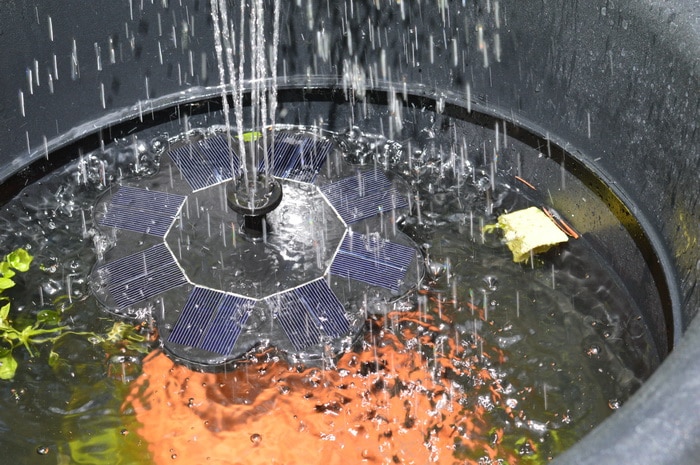
I used garden weeds for this recipes, choosing dandelion leaves, young plantain leaves, and chickweed. You could use spinach, lettuce, broccoli, or kale instead. If you use garden weeds insure that they are growing organically and have not been sprayed with pesticides or herbicides. You could also use other vegetables.
I used canned sockeye salmon in this recipe. You can use any canned fish.
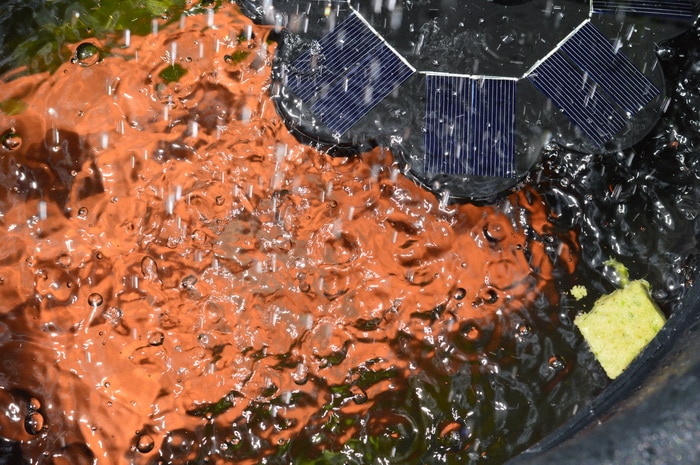
DIY Gluten-free Fish Food
Ingredients:
- 2 cups garden weeds or greens
- 2 tablespoons beef gelatin
- 1 1/2 to 2 cups filtered water, divided
- 1 — 7 ounce can sockeye salmon, including juice
Equipment:
- Blender
- 2 x ice cube trays
Directions:
Chop weeds like plantain, chickweed, dandelion greens, orach, spinach, lettuce, kale into 1/2 inch pieces. Measure by filling a measuring cup and pressing down the greens to fit as many as you can into the measure. Set aside.

Place beef gelatin in 1 cup of the water and allow it to soften and bloom for 5 minutes. Transfer the water to a blender jar. Blend on medium to mix the gelatin with the water. Add the greens. Blend until the greens are fully pureed. Add the canned fish and any fish juice that was in the can. Puree the canned fish with the greens. Add more water if necessary to allow the canned fish to move freely in the blender.
When the contents of the blender are of uniform consistency, remove the jar from the blender base. Pour the pureed fish food into ice cube trays. Place on a shelf in the fridge and allow to solidify. This will take 2 to 4 hours. (note that this is the fridge and not your freezer).
Remove the ice cube trays from the fridge. Remove the fish food cubes from the trays. Cut each one in quarters.
Line a baking sheet with parchment paper. Place the fish food cubes on the parchment lined baking sheet. Place in the freezer overnight to freeze. Remove the cubes and place in a freezer bag for storage. Label and date.
To use:
The gluten-free fish food cubes will float. Place 1 cube (1/4 ice cube) in a fish tank or pond for each 4 to 6 fish. Allow the fish to feed for 10 minutes. Remove any unused food. You can also let the fish food cubes float on the surface of the pond over 3 or 4 days if you are going away and won’t be home to feed your fish. When you return, remove any unused food to keep the tank cleaner.
Unused gluten-free fish food will rot in the tank and cause a build up of ammonia which can harm goldfish. Remove any unused portions of food so that it doesn’t become a problem in the tank.
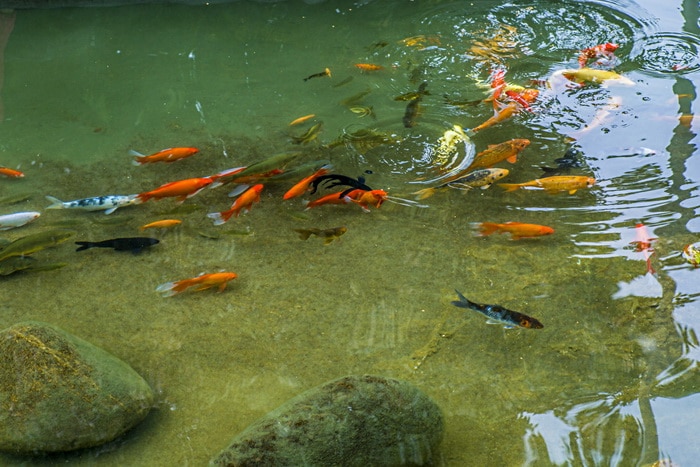
What do Goldfish eat?
Goldfish, shubunkin and other carp-type fish can also eat the same vegetables that you eat. Just wilt the vegetable or cook them, to reduce the cellulose to make it easier for your fish to ingest. Avoid feeding them rice, bread, and other grains. Their natural diet consists of vegetation, insects, small crustaceans, and other fish.
Enjoy this allergy-safe gluten-free fish food recipe. It’s so quick to make a batch you won’t even miss the commercial fish flakes.


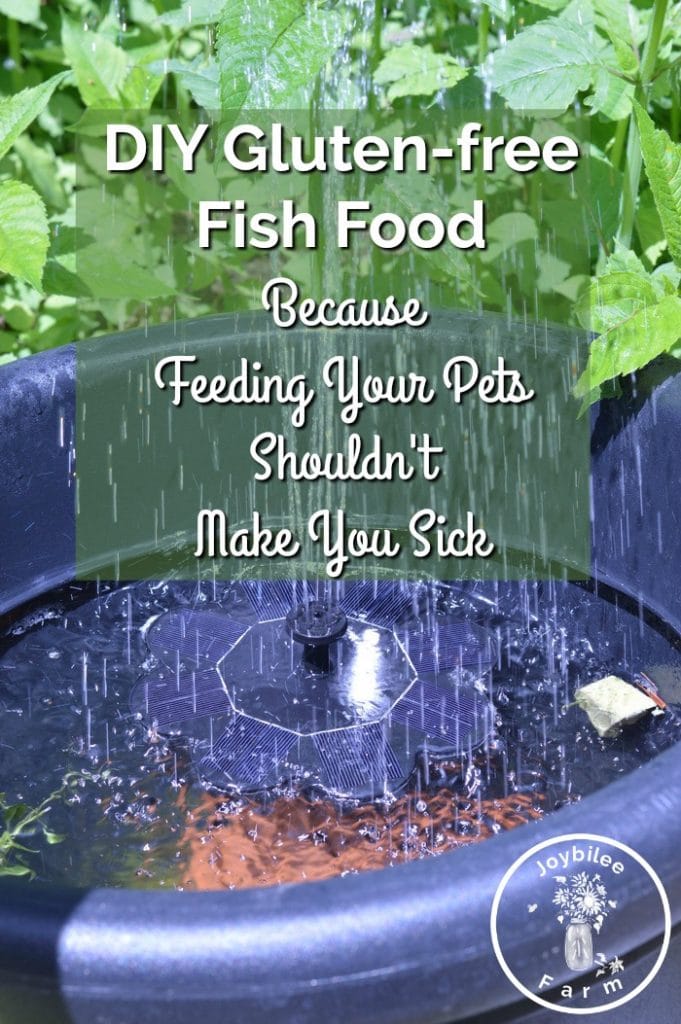
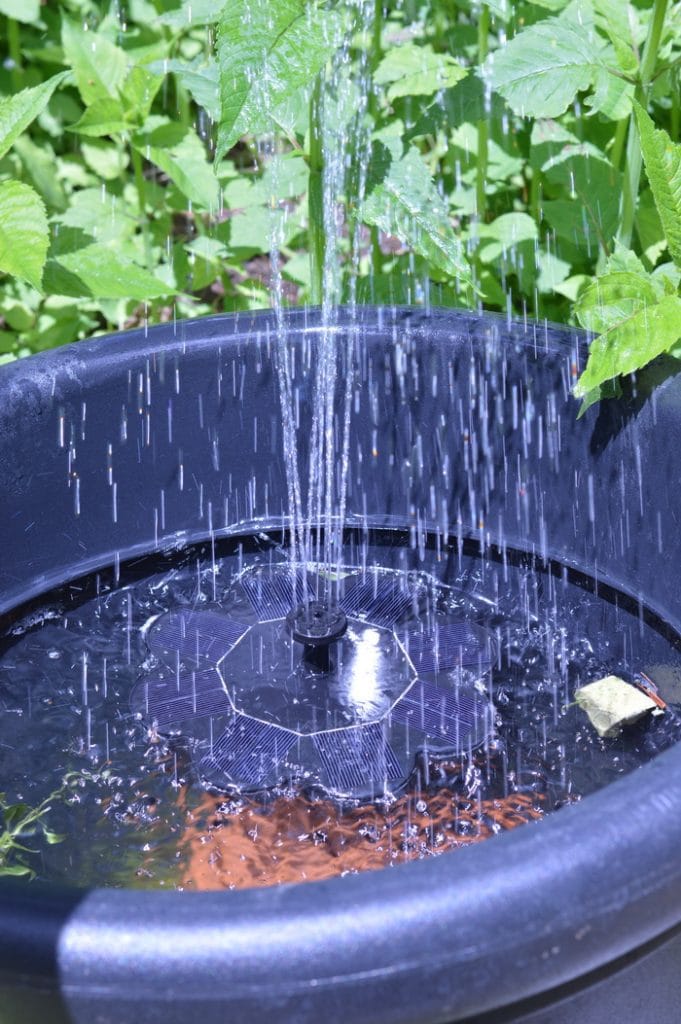

Thank you for this! I’ve made this many times now, and my fish seem to love it and are thriving. And I’m able to feed them and maintain the pond without fear of contamination from my many allergens.
I do skip the ice cube tray step, though. I simply pour the blended ingredients onto a cookie sheet, chill, turn onto a parchment, cut into cubes, then onto the parchment lined trays to freezer then to bags.
I’ve only used salmon, I’ve thought about adding some tiny shrimp, have you tried that? Information on recommended diet for goldfish is hard to find.
Thanks again,